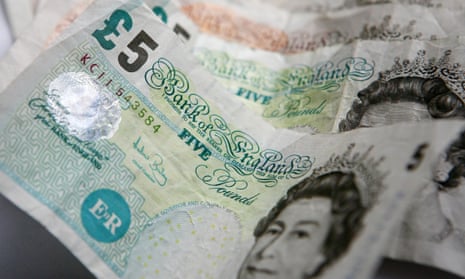The average UK household will owe close to £10,000 in debts such as personal loans, credit cards and overdrafts by the end of 2016, which is a new high in cash terms, a report has found.
Total outstanding non-mortgage borrowing grew by nearly £20bn or 9% in 2014, to reach £239bn, marking the fastest rate of growth in a decade, according to the report from PwC, Precious Plastic: How Britons Fell Back in Love With Borrowing.
It warned that people’s complacency over managing their debt may lead to a resurgence in bad debt.
The total amount of non-mortgage debt equated to nearly £9,000 per household last year, surpassing in cash terms its pre-financial crisis peak, the report said.
PwC projects unsecured borrowing will grow over the next two years by between 4% and 6% annually. This increase would leave the average UK household with non-mortgage borrowing of close to £10,000 by the end of 2016, taking consumers into uncharted territory in terms of borrowing levels, the report said.
Record low interest rates are helping to keep the cost of borrowing relatively affordable, but PwC warned that a 2% rise in interest rates on total household debt, including mortgages, would leave households needing to find an extra £1,000 a year just to cover the extra cost of interest.
A survey by PwC of about 2,000 Britons found there is a danger of complacency as people’s confidence in their ability to stay on top of their debts increases.
Fewer than one in five (18%) said they are worried about how they will make future repayments, down from 26% in 2013.
While just over a quarter (26%) of people expect their pay to be frozen or decreased in the next 12 months, this compares with nearly half (48%) of people who thought this in 2010, in the aftermath of the financial crisis.
But against the growing sense of optimism, PwC uncovered “warning signals”. For example, people aged between 35 and 44 are increasingly depending on credit to be able to afford essential items, with close to one in five people in this age group saying they borrow simply to make ends meet.
Of the £19.7bn increase in non-mortgage borrowing in 2014, nearly half of it, amounting to £9.1bn, came from student borrowing. PwC estimates that graduates who started university after 2012 could leave with an average debt of £40,000 to £50,000.
Around £4.2bn of last year’s increase came from credit cards, while £6.4bn came from personal loans and overdrafts and other sources such as payday loans and peer-to-peer loans, the report said.
The average credit card balance stood at £1,021 by the end of 2014, just £39 short in cash terms of its all-time high at the beginning of 2010.
PwC said people’s ability to remain in control of their debt will be challenged in the coming years, as the Bank of England base rate eventually starts to move off its historic 0.5% low. The total household debt to income ratio, including mortgage debt, is projected to reach around 172% by 2020 – surpassing its previous peak in the runup to the financial crisis.
Low levels of financial literacy, with many people routinely misunderstanding the true cost of debt, could put some people at particular risk, the report warned.
When presented with a number of options, just 21% of people it surveyed correctly understood the cost of a mortgage.
Simon Westcott, a director of PwC’s financial services practice, said: “Old favourites such as credit cards are staging something of a revival, while newer forms of borrowing such as peer-to-peer lending are starting to gain ground.
“Despite our survey revealing a relatively high degree of confidence among consumers about their ability to stay on top of their debts, [the] affordability of the UK’s household debt pile may come under pressure in the coming years.
“As the total household to debt income ratio heads towards 172% – exceeding its previous peak in the runup to the financial crisis – and interest rates increase, consumers could begin to feel squeezed once again.
“This could undermine growth for lenders and feed through into a resurgence in bad debt.”
